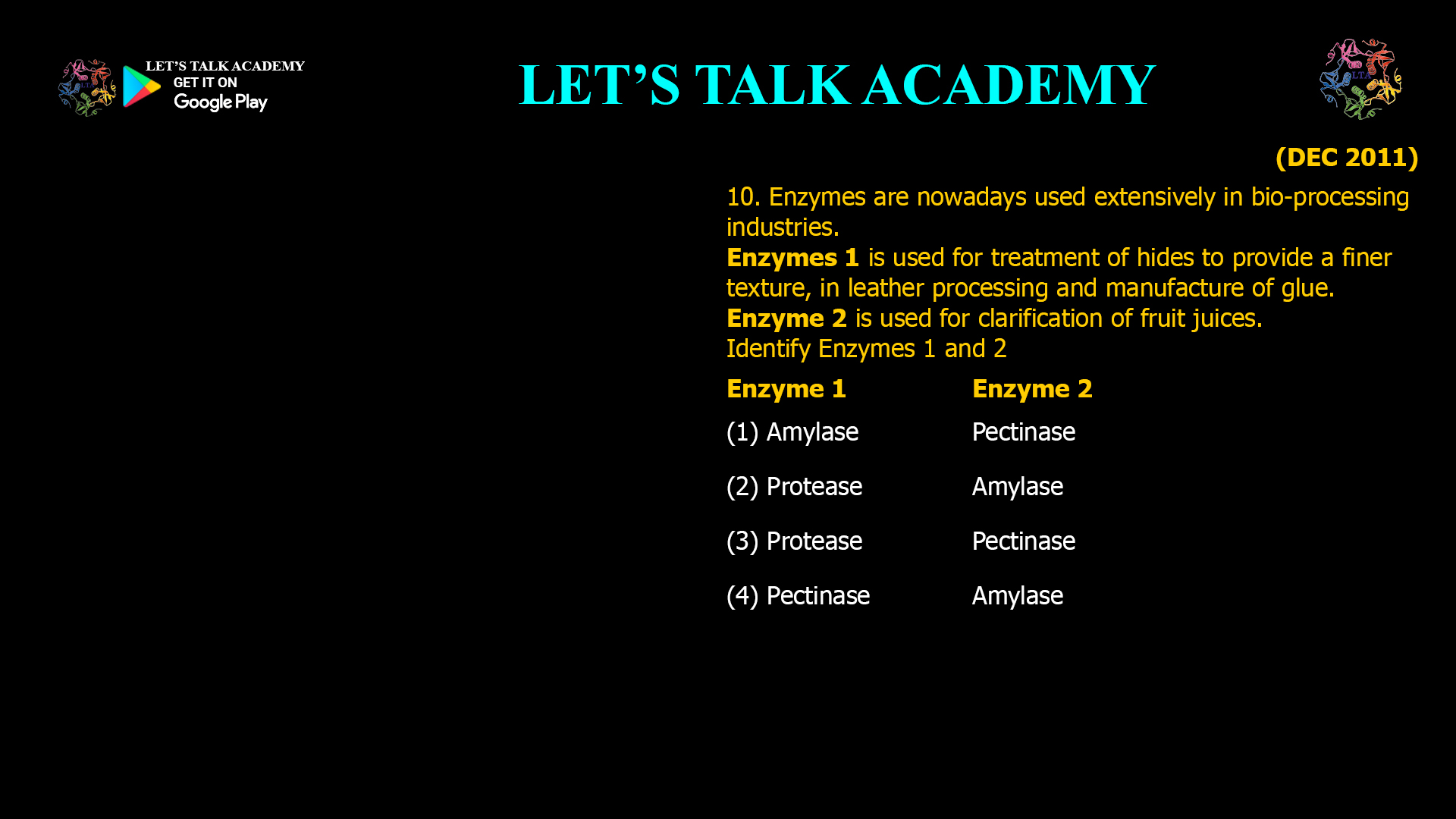- Enzymes are nowadays used extensively in bio-processing industries.
Enzymes 1 is used for treatment of hides to provide a finer texture, in leather processing and manufacture of glue.
Enzyme 2 is used for clarification of fruit juices.
Identify Enzymes 1 and 2
Enzyme 1 Enzyme 2
(1) Amylase Pectinase
(2) Protease Amylase
(3) Protease Pectinase
(4) Pectinase Amylase
Correct answer: (3) Protease – Pectinase
Enzyme 1 (for hide treatment, finer leather texture and glue manufacture) is a protease, and Enzyme 2 (for clarification of fruit juices) is pectinase.
-
Proteases hydrolyse proteins in hides, removing non‑collagenous proteins and interfibrillary materials, which softens and opens up the fiber structure, giving leather a finer texture and aiding in hide/skin processing and glue manufacture.
-
Pectinases hydrolyse pectins in fruit cell walls, reducing viscosity and haze so that juices become clear and easier to filter, which is why they are standard in juice clarification.
Option-wise:
-
Amylase – Pectinase
-
Amylase digests starch, used in brewing, baking and syrup production, not for primary hide softening.
-
Pectinase for juice clarification is correct, but Enzyme 1 here is wrong.
-
Protease – Amylase
-
Protease for leather is correct.
-
Amylase is not the main enzyme for clarification of fruit juices (pectin, not starch, is the key target), so Enzyme 2 is wrong.
-
Protease – Pectinase
-
Protease matches leather processing (soaking, dehairing, bating, finer texture).
-
Pectinase matches juice clarification.
-
This pair correctly identifies both enzymes.
-
Pectinase – Amylase
-
Pectinase is not used for hide texture; its main role is in pectin breakdown in plant tissues.
-
Amylase is again not the standard juice clarification enzyme.



